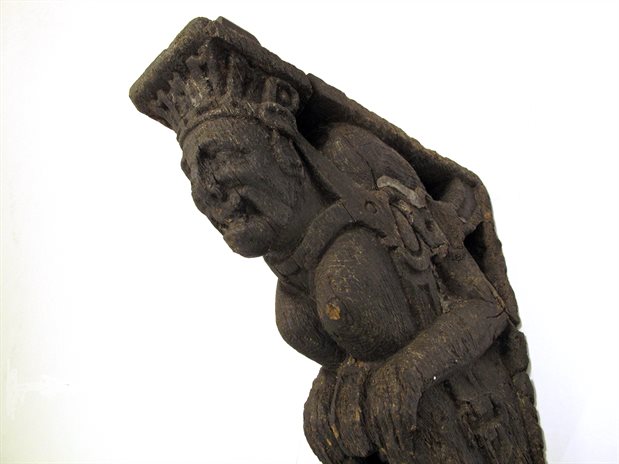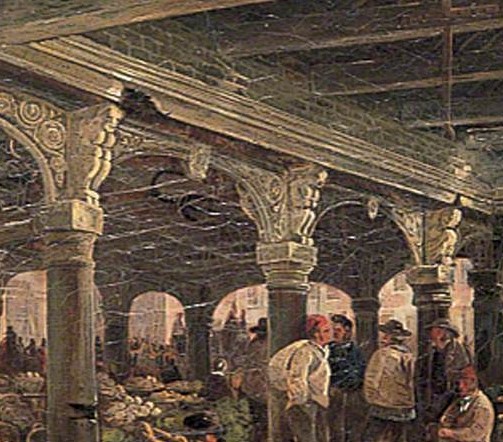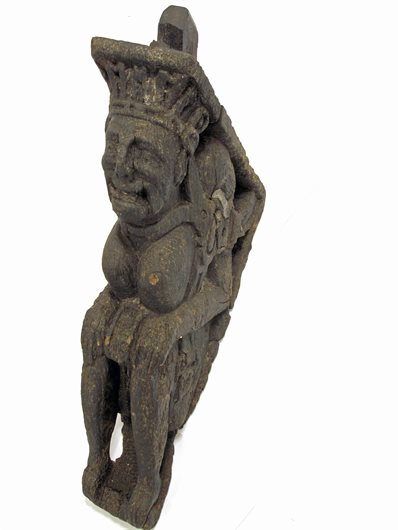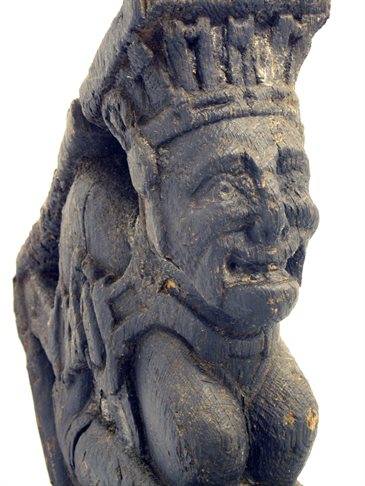The Corbel

Corbel on display in the Museum's History Gallery
,A corbel, in architectural terms, is a structural piece of wood, stone or metal jutting from a wall to support a projecting wall, parapet or beam, acting similar to a bracket. In Burgess' picture of The Market Hall, the corbels appear to be part of the central supporting pillars for the upper floor.

The Old Market Hall, 1858. Artist, William Burgess
The corbel in the Museum collection displayed on the history gallery is very similar in style to those portrayed by Burgess and is perhaps one of those carved by Weeks in 1605 for use in the Guildhall building.
As the Burgess painting demonstrates, the corbel would have been viewed from below which accounts for the strange proportions of the carving.

Corbel, Dover Museum History Gallery
The crouched figure appears to have a detailed harness that extends between the figure's breasts and also behind the headpiece, perhaps to signify that the harness carries the weight of the topbeam. The figure appears to be grimacing and despite the pronounced breasts, rather than depicting a women, the figure may be a grotesque, which in a church setting were used to protect the building and repel evil.

The head of the corbel showing the harness details:
Images of corbel by Daniel Porter
The figure was donated to the museum in the 1950s so it is not possible to state that this is a surviving carving from the Market House. However a local historian, M.H. Horsley, writing at the end of the nineteenth century recalled that several of the corbels had been saved when the Market Hall was demolished:
“The Hall was raised on pillars and corbels of wood, which were curiously carved by a Dover man named Weeks. Several of the corbels are still to be seen, having been rescued from destruction many years ago."